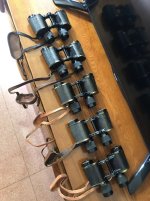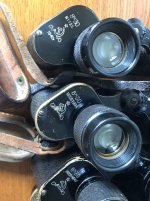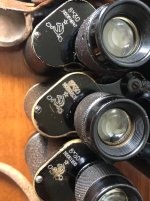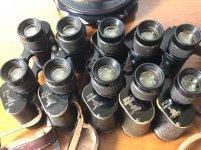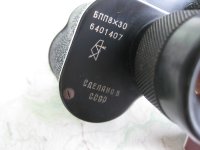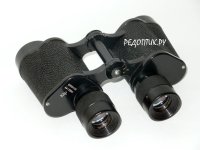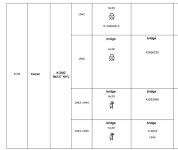Hi Sommer43 - thanks for sharing those pics. I think 8x30 individual focus binoculars (as a category) were not uncommon in the World War II era, including ones made in Soviet factories: 8x30 and 6x30 seem to be quite favoured for military use. It would be interesting to see how they compared to binoculars made by the other nations.
I have a couple of questions:
- are ex-Soviet binoculars often found in the People's Republic of China? The PRC has its own optical industry of course, and has done for decades, but I was wondering whether many binoculars came from the Soviet Union in the old days (1940 to maybe 1960).
- what's the condition like of the binoculars in your photos: did they need much work (cleaning internal optical services, collimation etc)? How difficult is it to find technicians in the PRC able to work on binoculars? There are not as many technicians with those skills in the West as they used to be.
- the binoculars in your photo look like they don't have anti-reflective coatings... is this correct, or is the colour tint in the coatings not very obvious? Are there services that apply anti-reflective coatings to uncoated glass in the PRC? As I mentioned in your other thread about the Sard 6x42, I remember seeing a photo of one (owned by an owner from the PRC) that looked as though it had been multi-coated.
- some of those binoculars look like they're made from brass, how much would these weigh compared to ones made from aluminium?
Thanks again
Patudo

